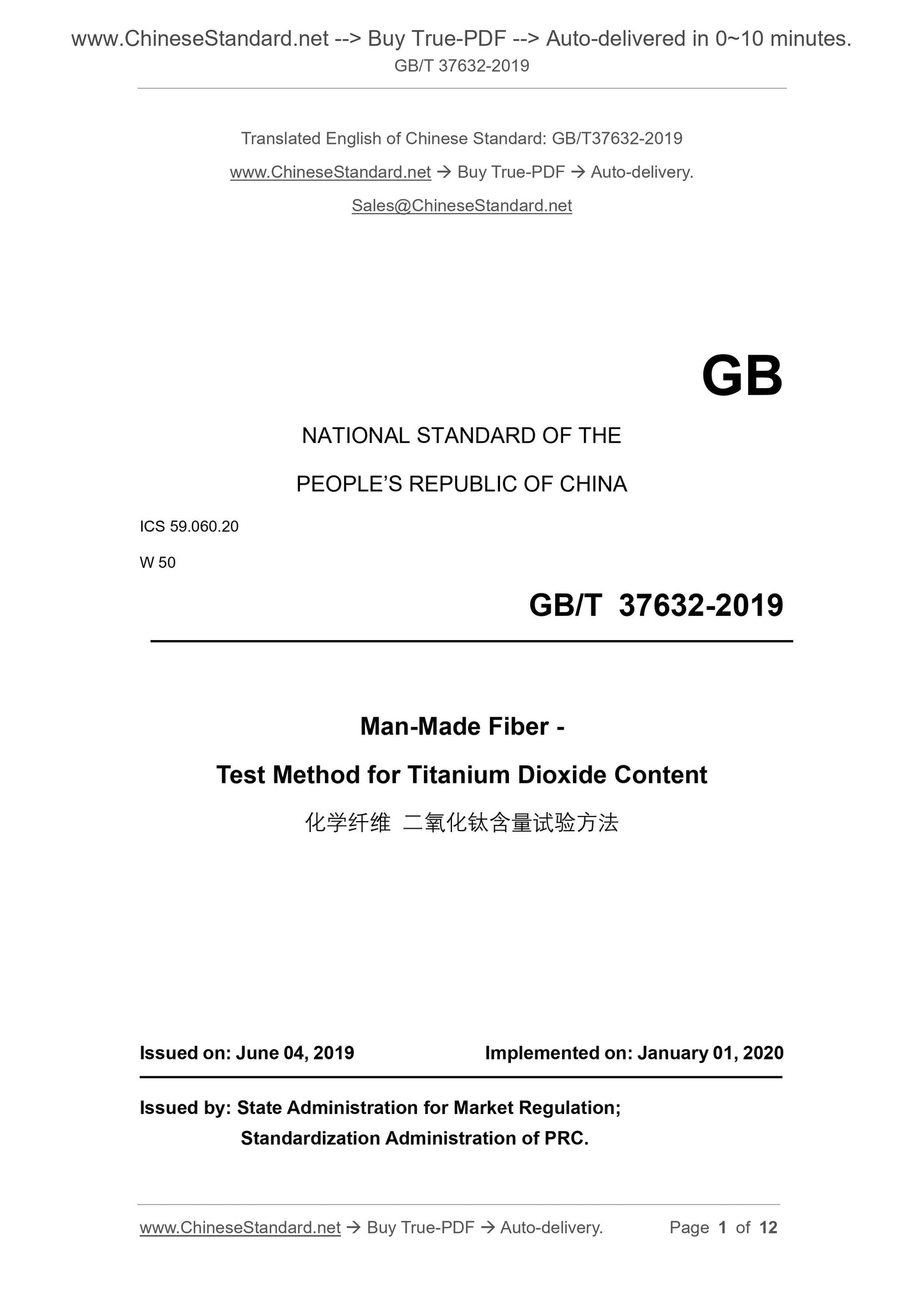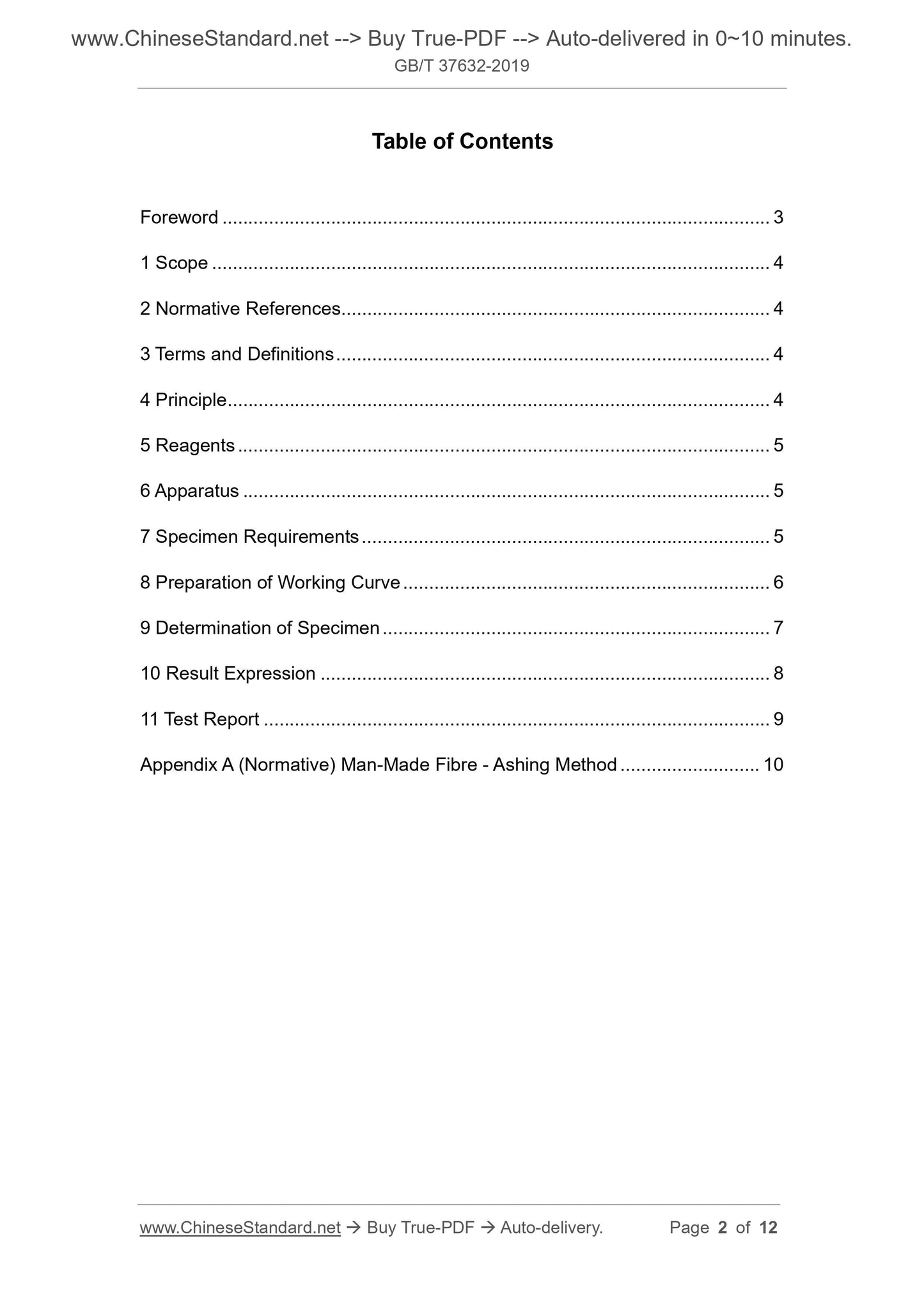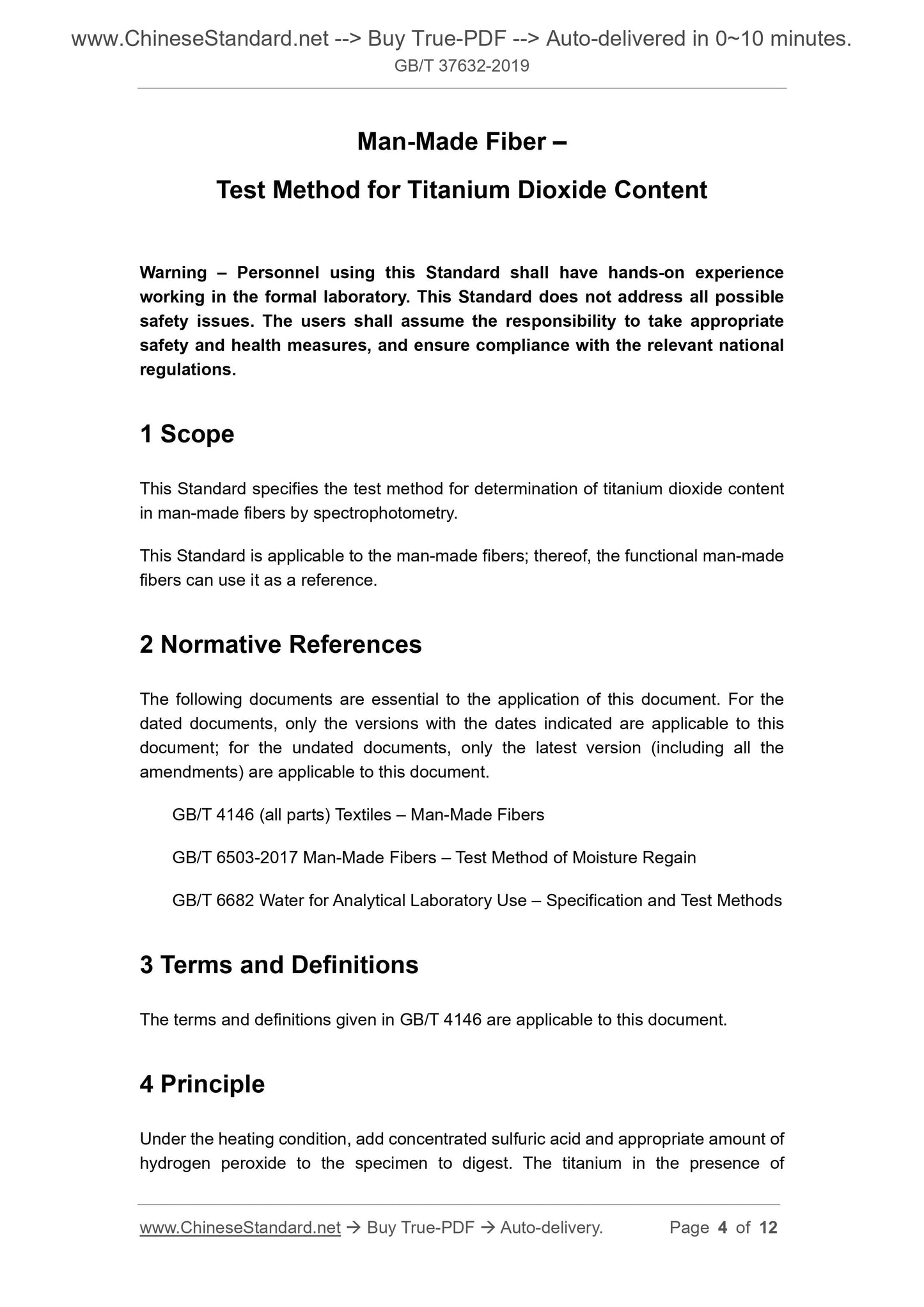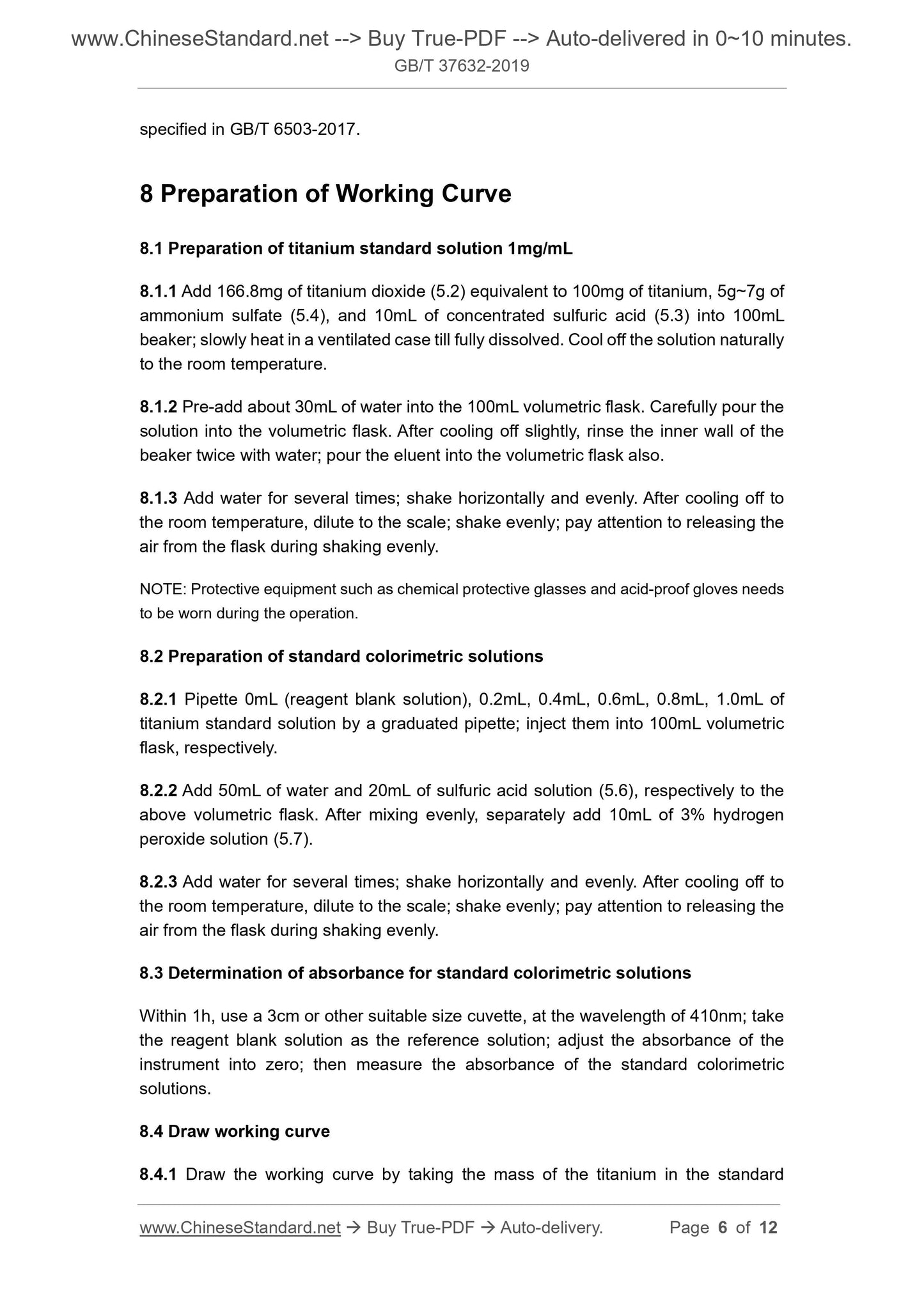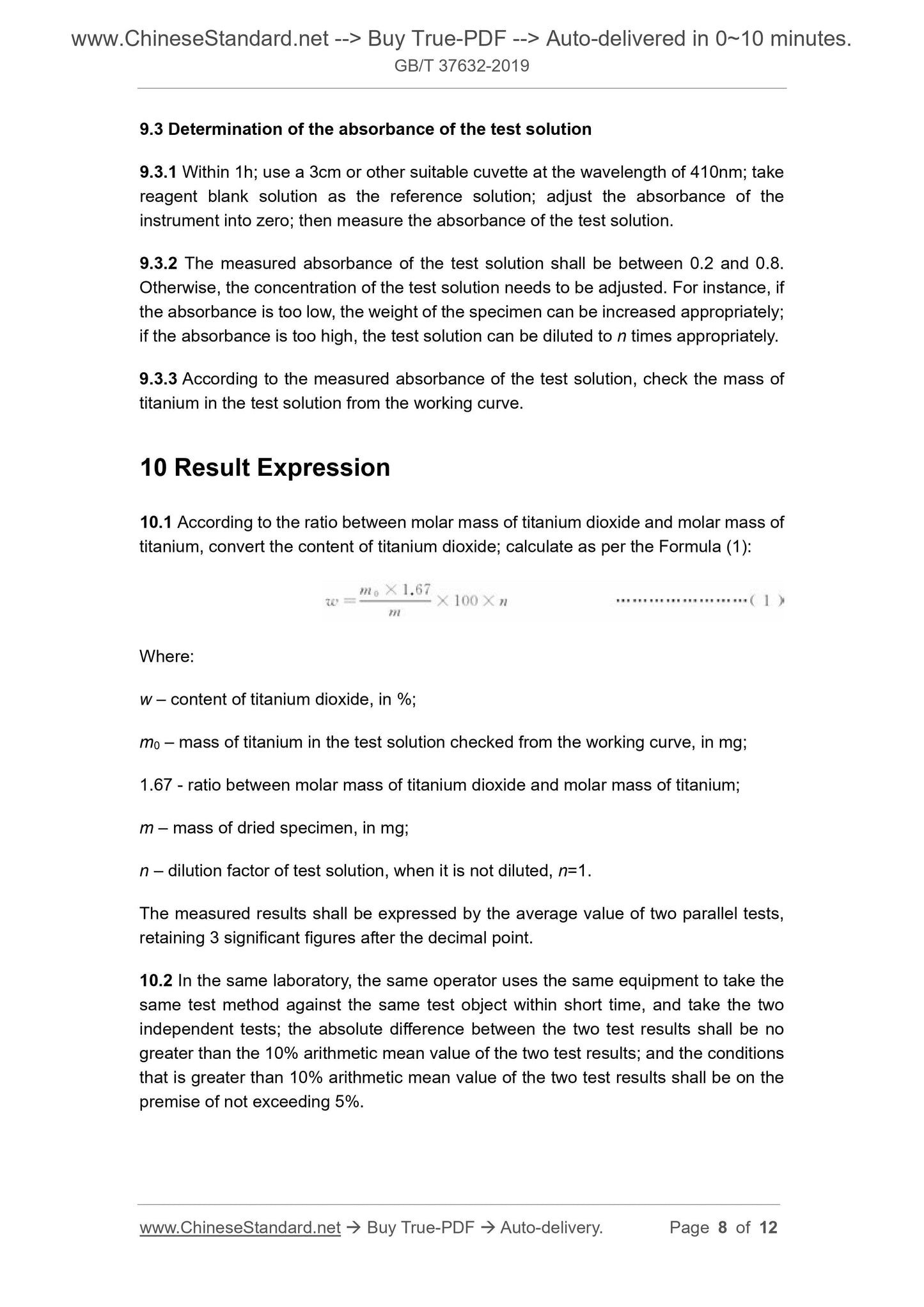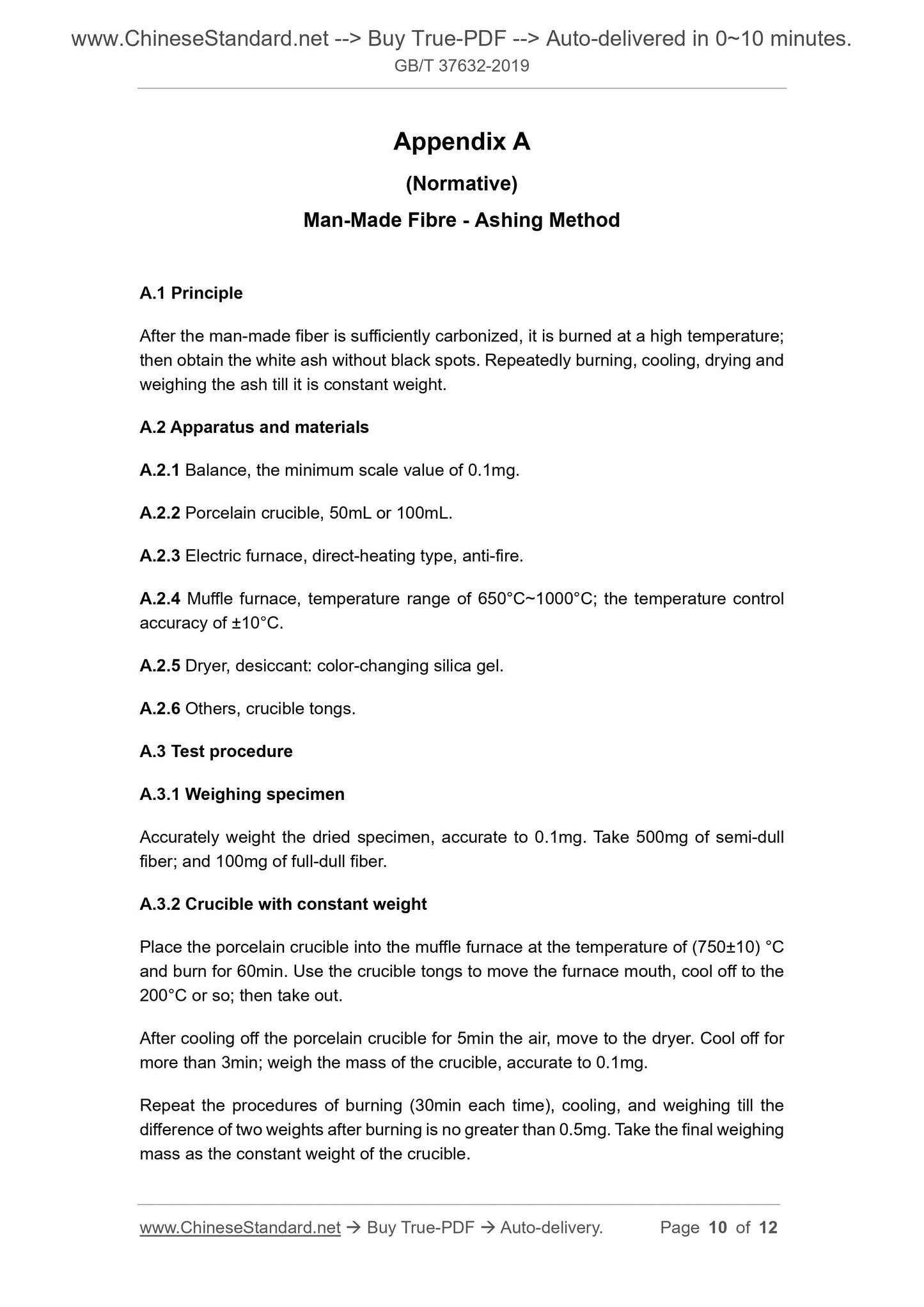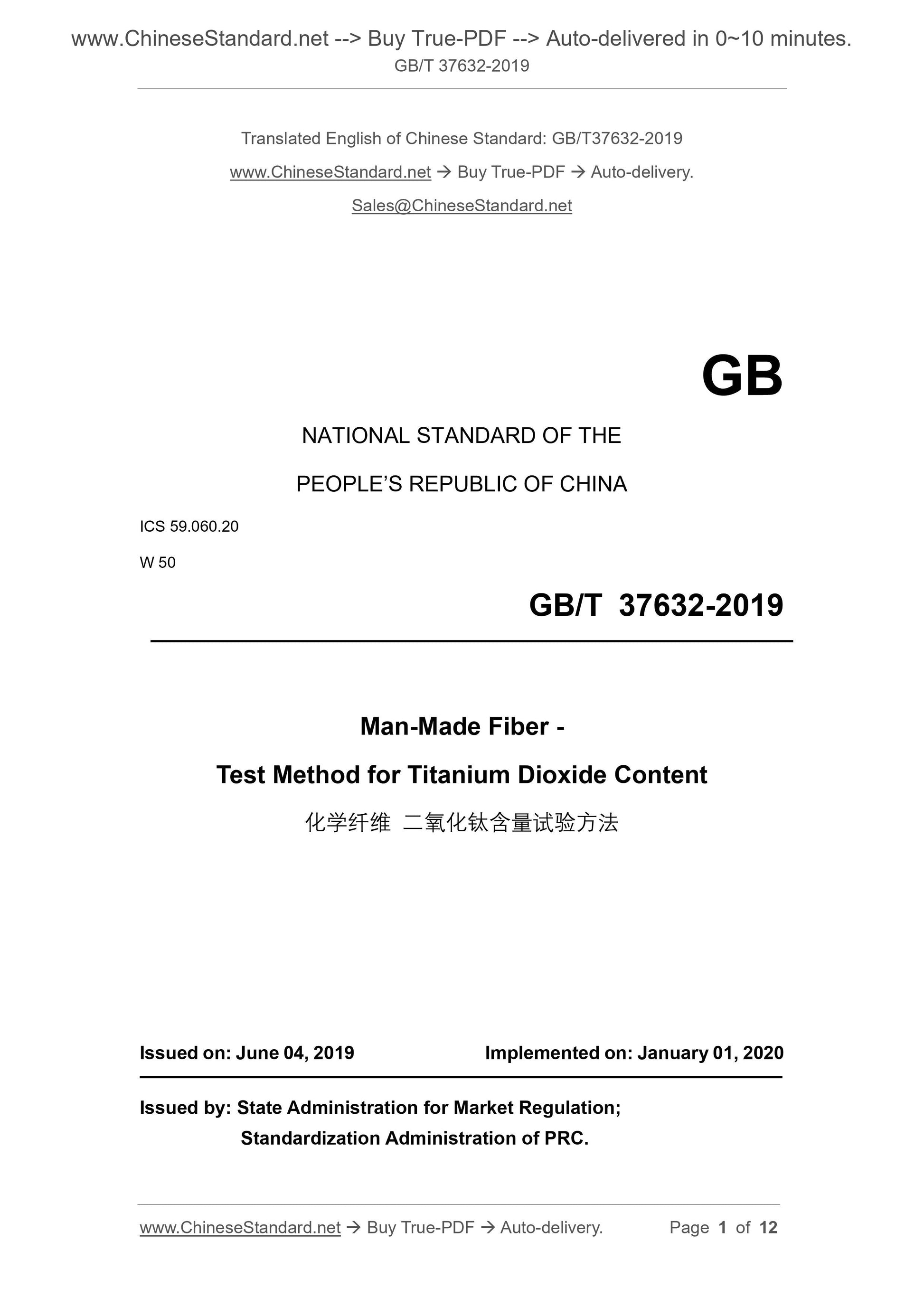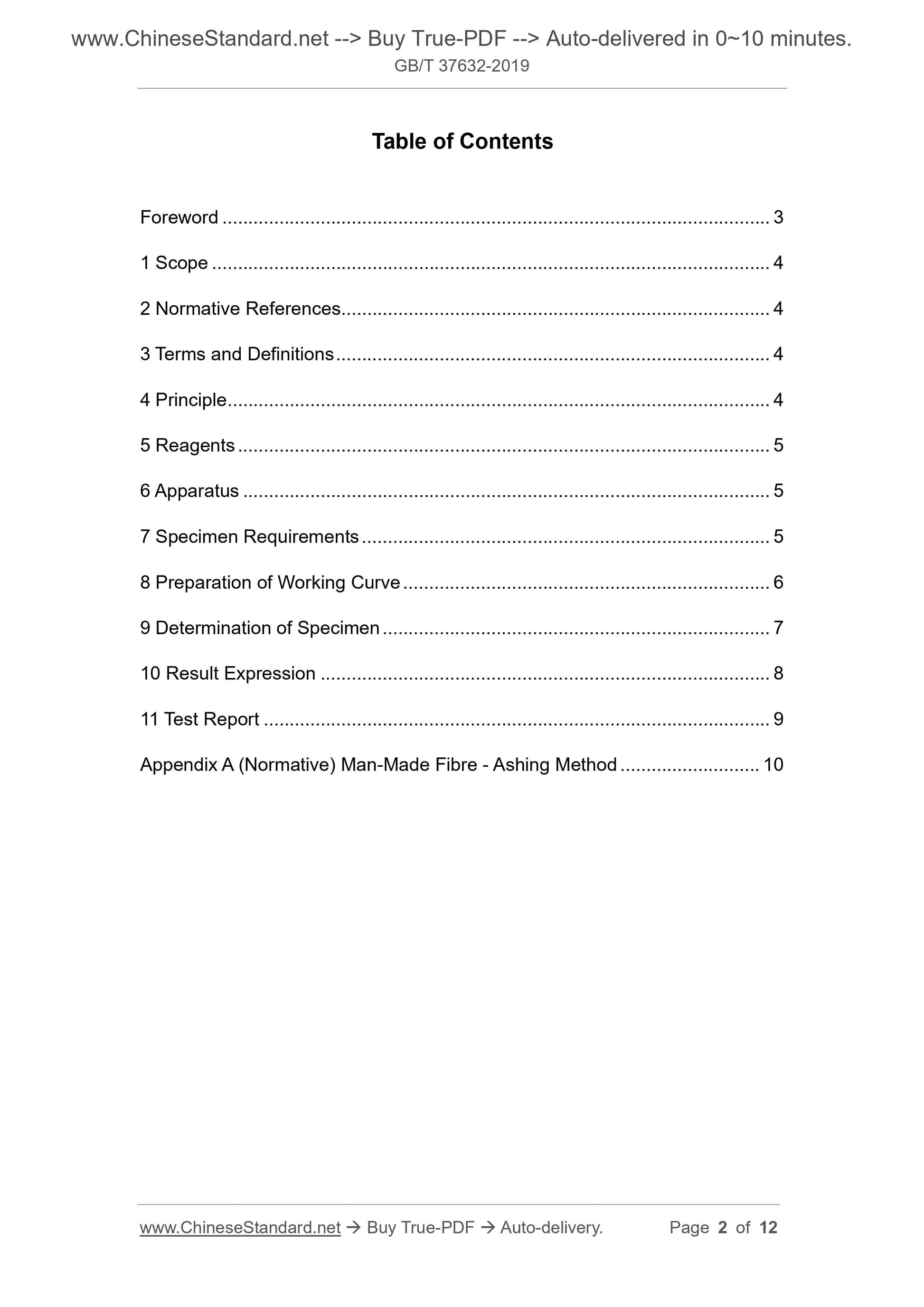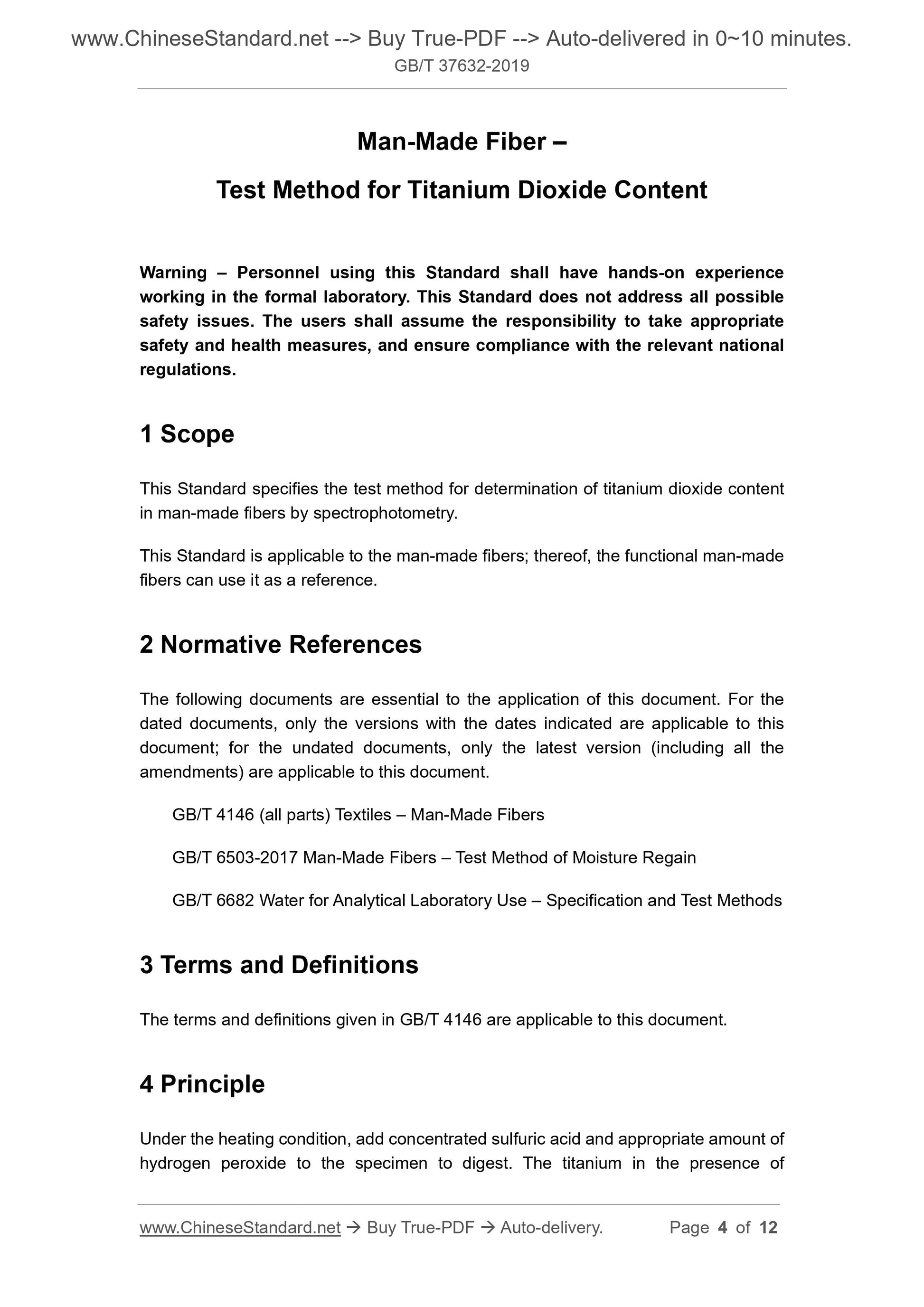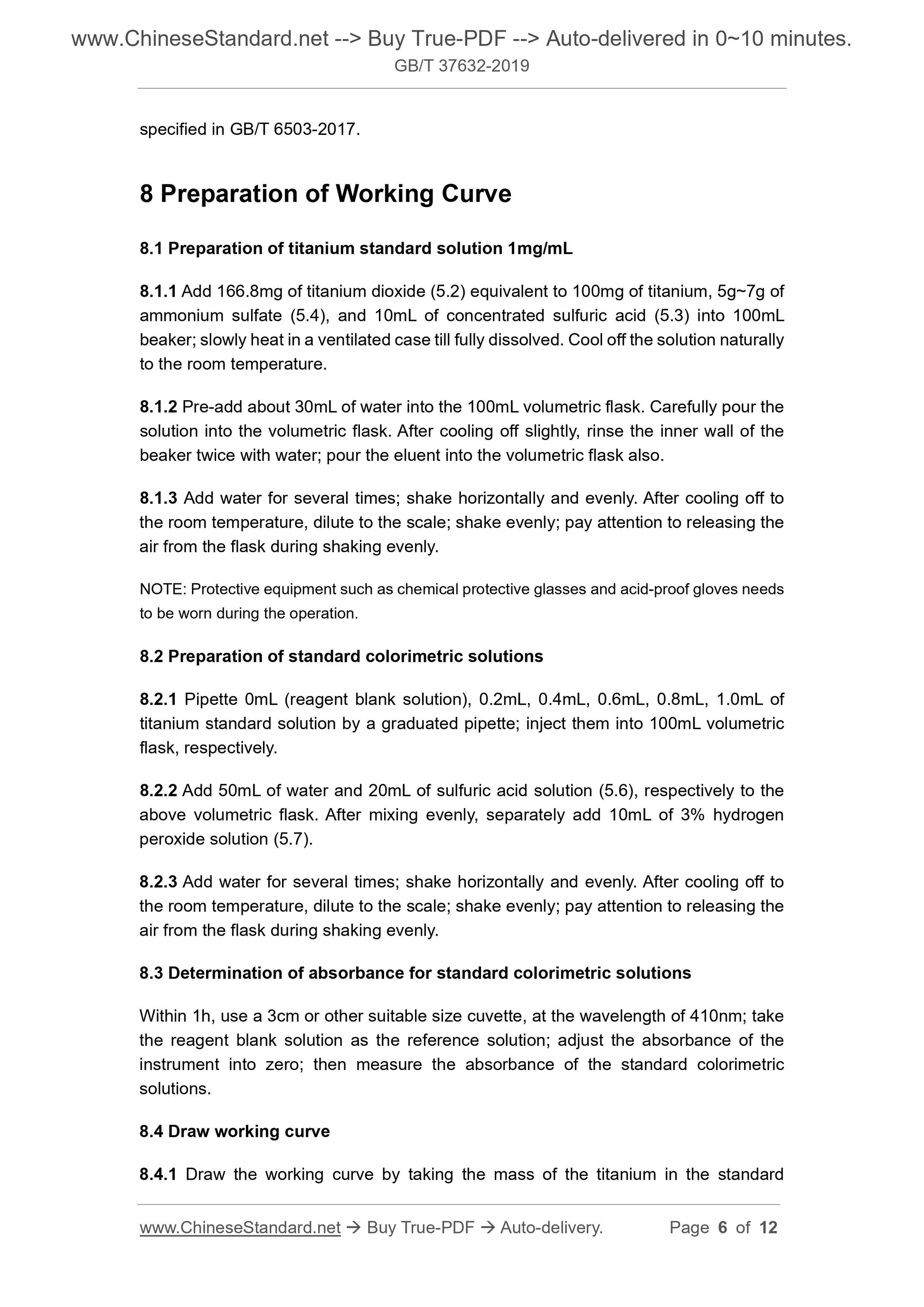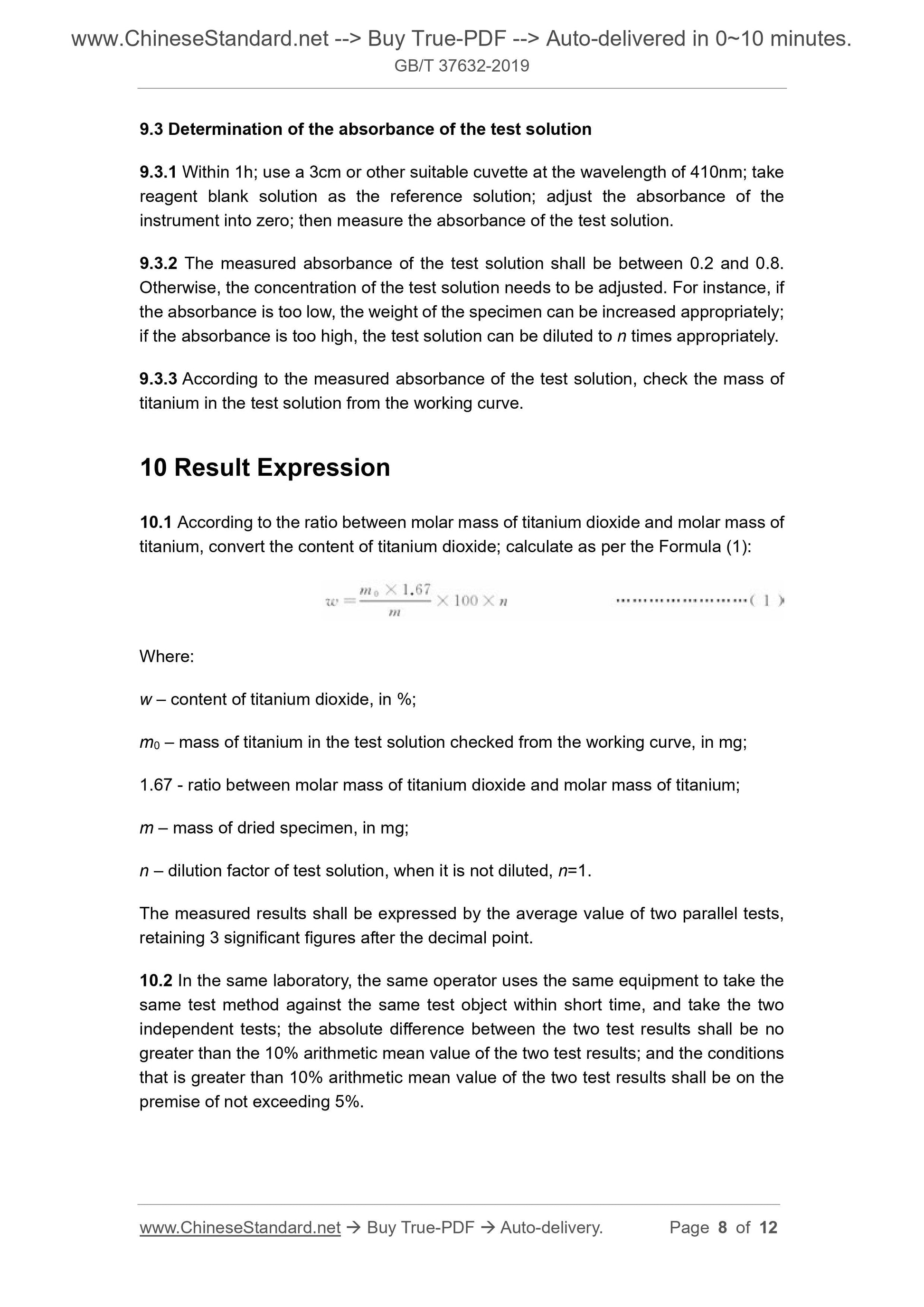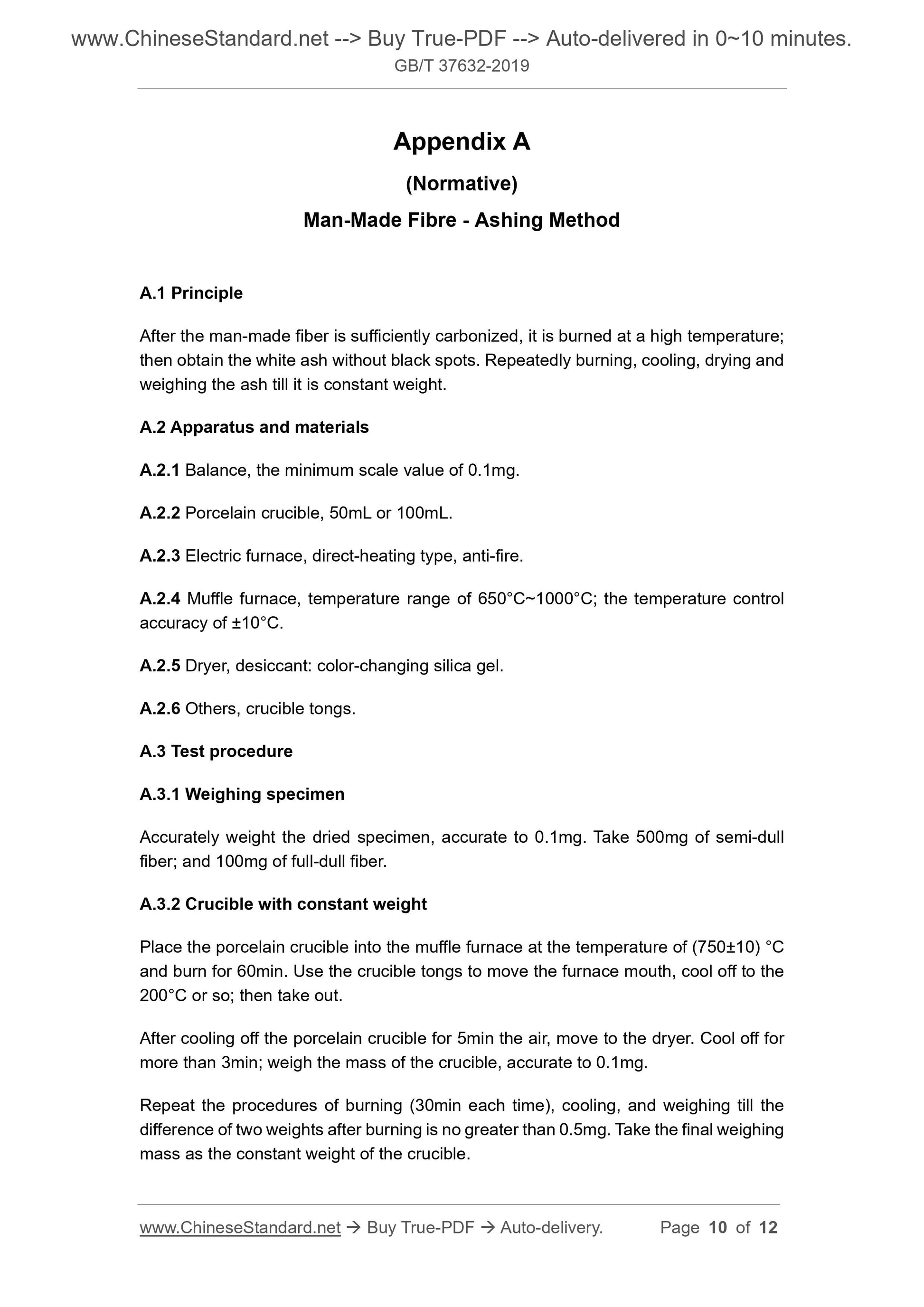1
/
of
6
www.ChineseStandard.us -- Field Test Asia Pte. Ltd.
GB/T 37632-2019 English PDF (GB/T37632-2019)
GB/T 37632-2019 English PDF (GB/T37632-2019)
Regular price
$175.00
Regular price
Sale price
$175.00
Unit price
/
per
Shipping calculated at checkout.
Couldn't load pickup availability
GB/T 37632-2019: Man-Made Fiber - Test Method for Titanium Dioxide Content
Delivery: 9 seconds. Download (and Email) true-PDF + Invoice.Get Quotation: Click GB/T 37632-2019 (Self-service in 1-minute)
Newer / historical versions: GB/T 37632-2019
Preview True-PDF
Scope
This Standard specifies the test method for determination of titanium dioxide contentin man-made fibers by spectrophotometry.
This Standard is applicable to the man-made fibers; thereof, the functional man-made
fibers can use it as a reference.
Basic Data
| Standard ID | GB/T 37632-2019 (GB/T37632-2019) |
| Description (Translated English) | Man-Made Fiber - Test Method for Titanium Dioxide Content |
| Sector / Industry | National Standard (Recommended) |
| Classification of Chinese Standard | W50 |
| Classification of International Standard | 59.060.20 |
| Word Count Estimation | 10,187 |
| Date of Issue | 2019-06-04 |
| Date of Implementation | 2020-01-01 |
| Issuing agency(ies) | State Administration for Market Regulation, China National Standardization Administration |
Share
